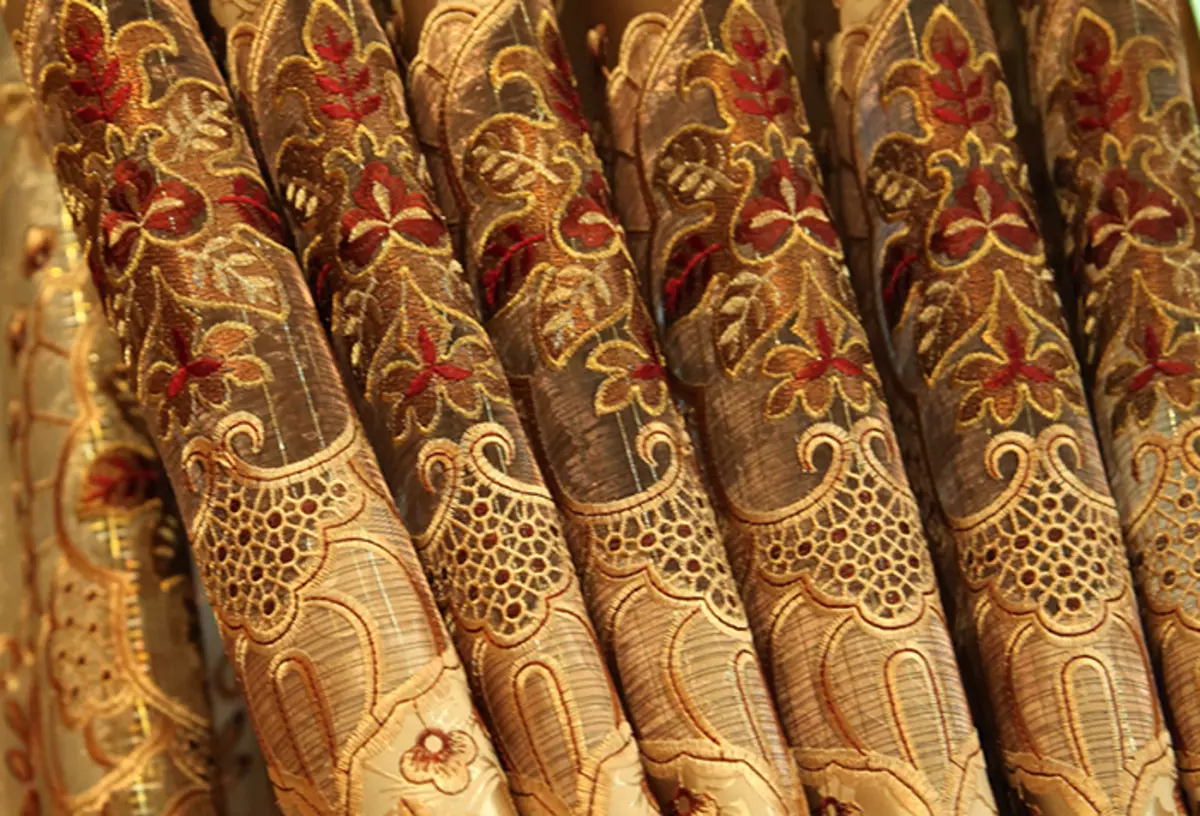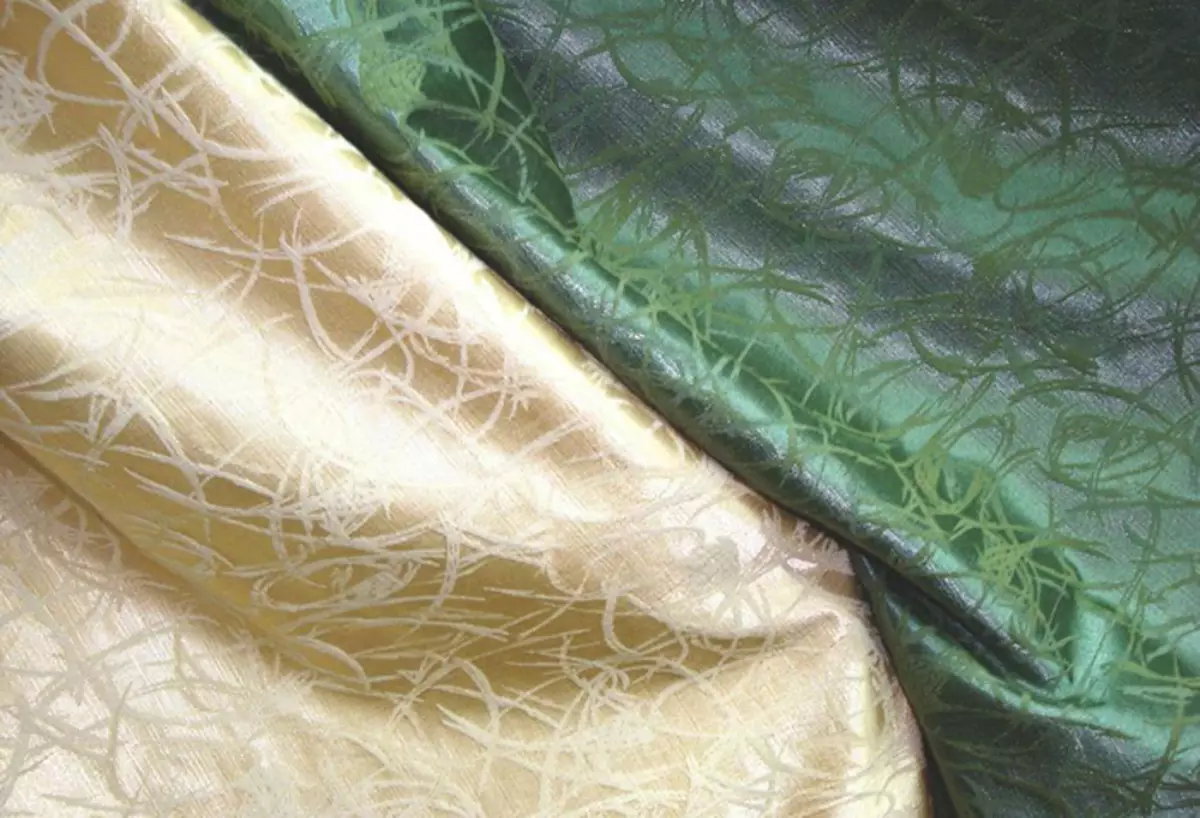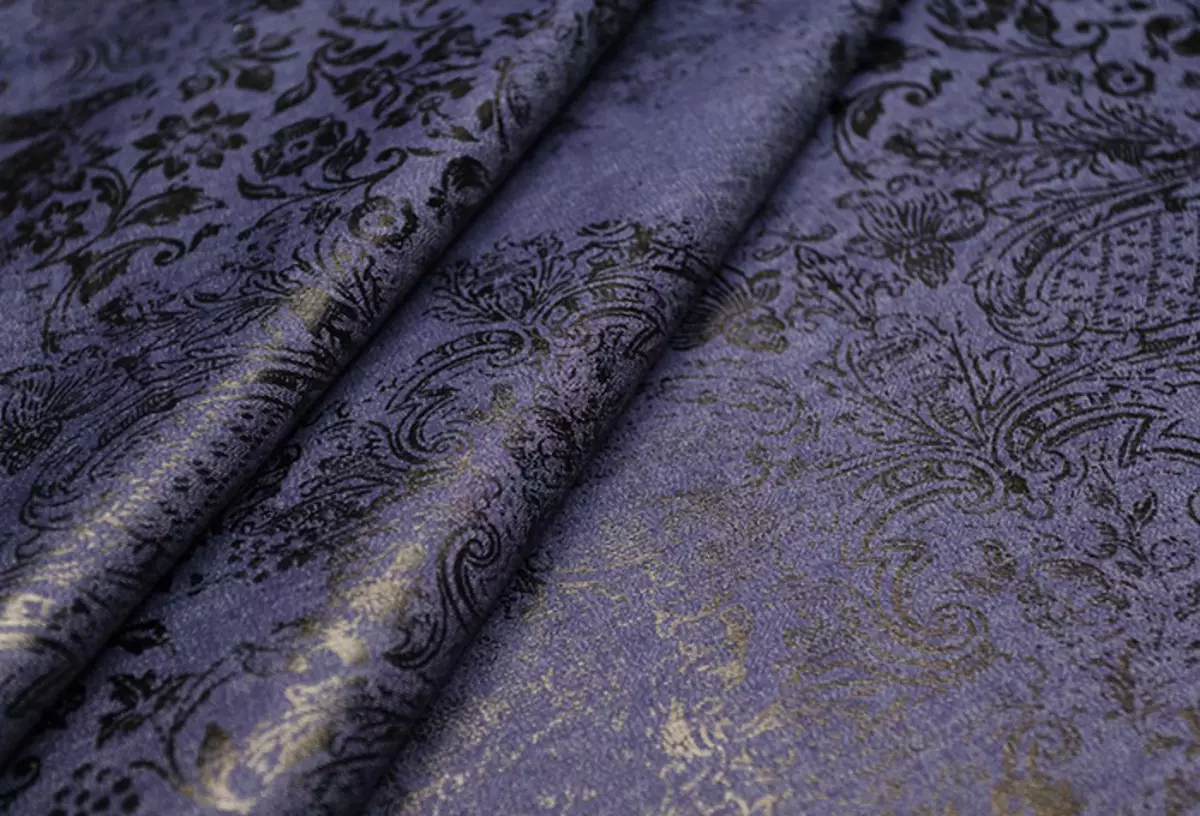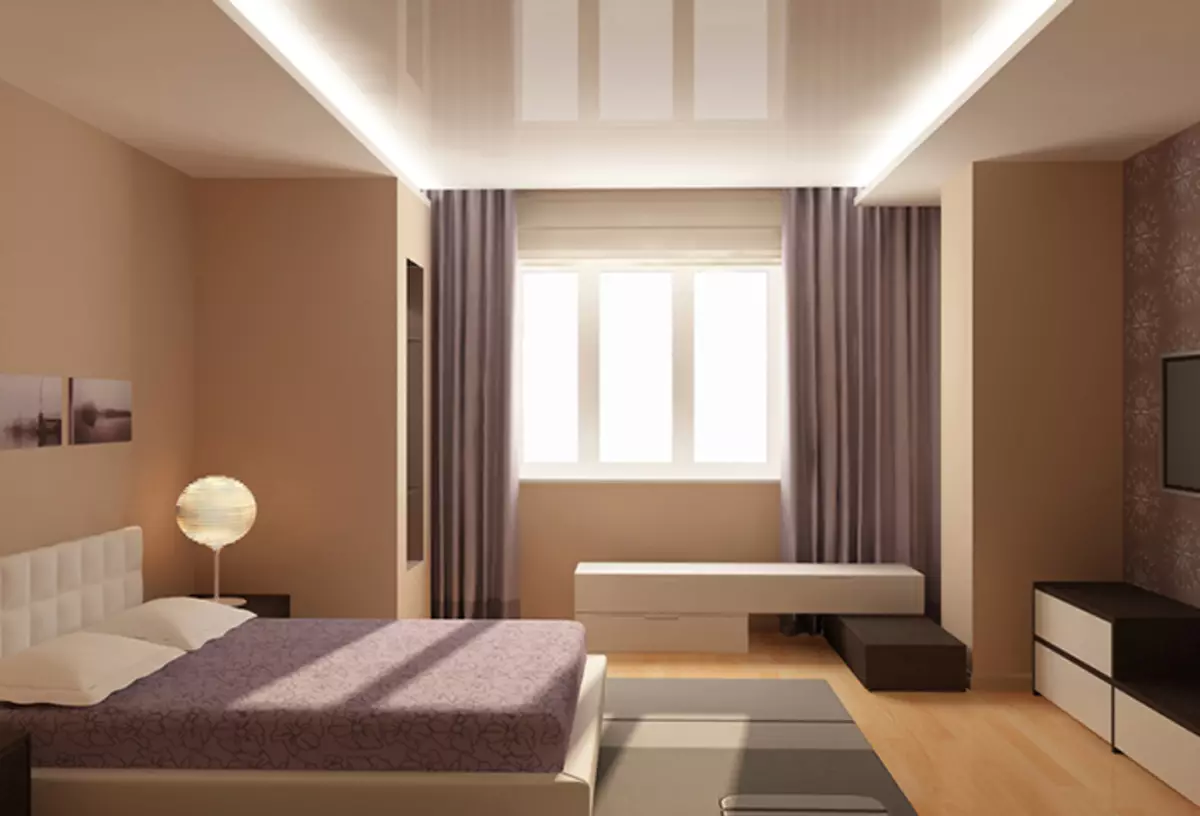Modern portroom fabric is a varied material, a well-dreament, durable, practical, performed in the most unimaginable colors. Now there are so many types of fabrics that without any special knowledge about them to choose a suitable enough. What are the fabrics for the production of fabrics and what fashion trends are now the most popular?

What is a chopper tissue?
Among the materials for sewing curtains there is a clear distinction. Pilot and telly fabrics are isolated, and the first are in demand from the Middle Ages, and the second entered the use of much later. The curtainic fabric can be represented by the following types of materials:
- velvet;
- linen;
- silk;
- satin;
- jacquard;
- taffeta;
- atlas;
- velours;
- Shenil and others.
Modern textiles for the most part is represented by synthetic materials, and in Europe it is polyester, and in China - nylon. Much less often can be found natural and semi-natural fabrics. Why? It is not a lack of raw materials, but in the practicality of these materials. Synthetic has greater durability, it is easier to wash it, iron, it is easily painted in any shades, resistant to sunlight. She has a mass of other advantages inherent in each individual type of fabric, and a significant minus one is the absence of ecology.
Fabric for the porter is often treated with special compositions to increase resistance to ultraviolet, smells, washing. It can handle it in order to increase antistatic properties, and if these are natural fibers, then against the increased interest of moths. European materials are distinguished by high quality, long service life, luxurious textures and design drawings. Materials from China are much cheaper, inferior in quality, but perfectly suitable for premises, in which style is often changing, as they can be well saved. If the hostess at home loves to change the window decor, Chinese samples are what it is necessary.
The curtainic fabric can be used to sewing curtains, covered, pillowcase for decorative pillows, napkins, and even tablecloths. You can select them into tone with interior upholstery materials - this is competently, beautiful and harmoniously.

Characteristics of materials
The characteristic of the materials for the curtain is not possible without describing their operational qualities. Let's start with the natural, and we will finish the newest developments of European technologists.
Article on the topic: Kitchen curtains for one side: Traditional and unusual solutions
Natural flax - plant of vegetable origin, eco-friendly, durable, improving microclimate in any room. It is capable of absorbing ionizing radiation, not statical, acts as a natural antiseptic and is resistant to fungal lesions. This is the most useful material for health, which reaches 50-60 years. The disadvantages of this tissue for the curtain include the following:
- It turns great and difficult to smooth;
- Poor stains;
- gives shrinkage after washing;
- expensive.
Flax to confuse with other materials hard due to its natural color - from gray to gray-beige color. Most often used for interior decor in ecostel or classic. Designers recommend using flax in children's rooms, where microclimate is especially important.
Natural silk is the most rare tissue used to tailor the curtains, it has a high cost and requires gentle care. Not suitable for decoration of the kitchen window. It looks expensive, glitters and shifts into the light, gently and spectacically draped, requires protection from the sun. Silk is used to sewing curtains and lambrequins. It is more often used artificial silk - a cheaper and less pleasant material.
The taffeta is a material with silk overflows, in the classic version is made of silk threads, although acetate or polyester is used more often. It is a dense, but lightweight material, shiny, overflowing into the light. It looks elegant, especially with a printed pattern. Practical.
Satin - made of cotton threads, the most expensive material from all cotton. The main advantage is that it practically does not mind. It is considered a universal material for curtains to any room. Externally similar to silk, as it has the same attractive gloss. Soft enough, but with the frequent washing, from which its quality is not lost.
Atlas - a cloth for a porter, Satina's relative, but somewhat thinner. Refers to expensive noble material. It can be performed from a shoe, acetate and polyester. It looks elegant, well draped, perfectly combined with thin curtains from tulle, organza and chiffon. Suitable for elegant living rooms, bedrooms and gives them even more chic.
Article on the topic: What size are interior doors: the calculation of the loot for the finished door

Jacquard fabrics
Jacquard is one of the most durable interior materials. They sew curtains, napkins, tablecloths, decorative pillowcases, such a fabric is suitable as a upholstery material for furniture. Most often in the interior are used jacquard cordial fabric with a pattern. Jacquard is beautiful, durable, does not lose the brightness and definition of the drawing and is very durable, as it is resistant to temperature drops and high humidity. Curtains from it can be decorated with living room, bedroom, kitchen, office and any other room. There are single-layer and multi-layer jacquard with a large and small pattern. It can be severe, similar to tapestry and easy. Jacquard is a weave of cotton and synthetic threads of different density, so there are so many varieties. The jacquard fabrics include a damaste for whom satin inclusions are characterized. Silk, woolen and cotton threads may be present.
There is another interesting material - it is Black-Out, the purpose of which is concluded in full insulation of the room from light. Used for home theaters, conference rooms and other institutions. Performs a purely practical function. These are the most widely used fabrics for the curtains, they can compete with Shenil, microenyl, velor, velvet. Their secret in the special texture of the surface, soft and tender.

How and with what to combine cloths for curtains?
The curtainic fabric can be used in a separate version as an independent decor of the window and in combination with other tissues. How to combine materials among themselves?
To begin with, you can be guided by the following tips of designers:
- The living room is suitable such fabrics like taffeta, a group, velvet, satin, silk, flax;
- Silk, Atlas, Cashmere, Taffeta are appropriate in the bedroom;
- The kitchen is preferable to satin and flax;
- In the children's room, it is desirable to use light practical or natural materials (satin, flax, tulle curtains).
The lighter room, the denser there must be a curtains for curtains. It will protect the room from excess sunlight. It is most practical in this regard Jacquard and natural dense flax. For rooms, which rarely falls intense sunlight, you can choose curtains from silk and satin fabrics, which are "afraid" of ultraviolet. In such rooms, the color and texture of the fabric will be deeper and noble.
Article on the topic: Methods of hanging lamps to the ceiling of plasterboard
The drawing materials are used in the premises in order to enrich them with color and texture or create an exact combination with the upholstery of furniture and other textiles. Textiles with a pronounced pattern is not appropriate in rooms with the same wallpaper. Something should be moderation. The thinner the curtain fabric, the sharper folds it forms, and vice versa, the harder and dense material, the more rounded drapery it forms.
There are some techniques for textile selection:
- If the room has a leather or polished wooden furniture, the ideal will be cordial fabric with a velvety surface;
- with modern painted furniture combined materials with embossed patterns and geometry;
- In the room with low ceilings, well-draped curtains should be hung, which can be beautifully put on the floor, the taffeta is not suitable here;
- In the kitchen, the curtains should be combined with a tablecloth, in the bedroom - with a bedspread, in the living room - with upholstery of furniture or decorative covers on the pillows.
Despite the fact that the curtains in modern interiors are often replaced with rolled curtains or blinds, textiles will always remain more popular and "homely" option of the window decor. The curtain fabrics are so rich and diverse that you can choose them to any style in the interior, emphasize its feature, make additional paints, volume, expand the boundaries of perception. In addition, the fabric for the porter protects from the sun, looks from the street, retains heat and isolates from street noise.
The curtain curtain fabric is an important element of the decor of the entire room. The mood of the room, the overall perception of all objects of the situation and the feeling of its inhabitants depends on its choice. Curtains should be beautiful, emphasize the style of the interior, perform the functions assigned to them, but first of all - to please our owners. In order to choose the right cloth, there are few tips, it is important to feel the material, present it in your interior, to estimate the effect of color on the sensation and mood. Let every item be harmoniously complement each other.
